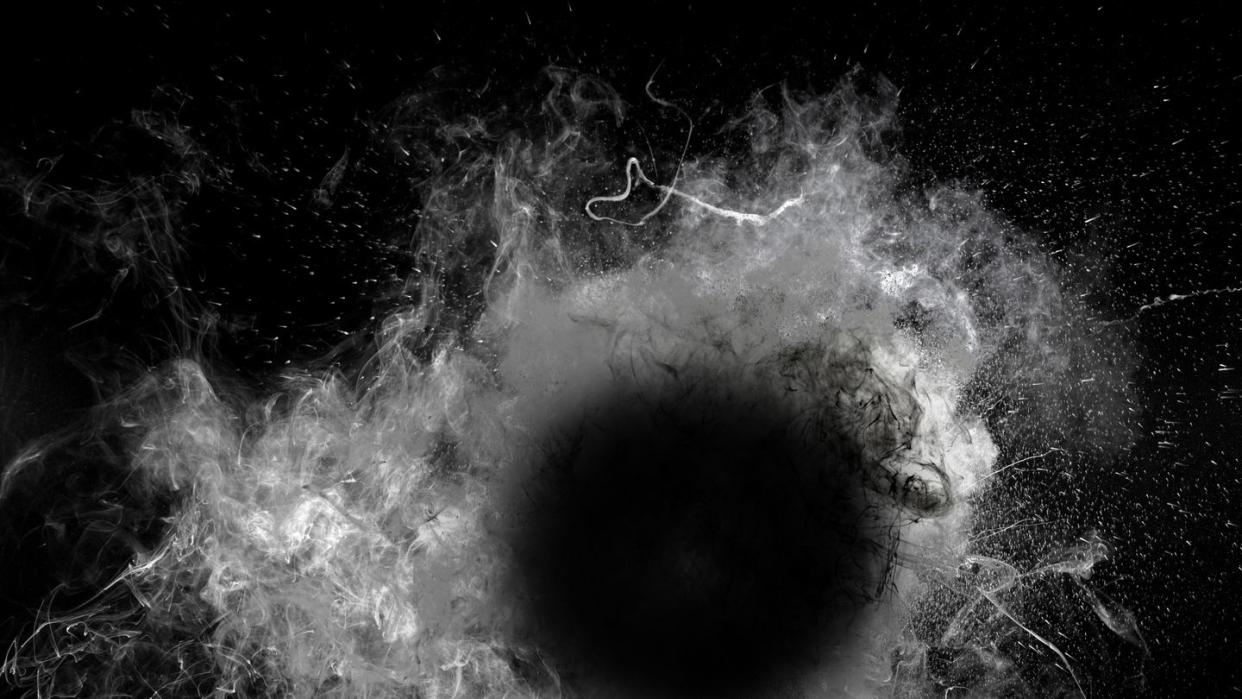Those Disgusting Black Holes Won't Stop Burping Up the Remains of Stars

Tidal disruption events occur when a black hole gobbles up a star, sending out a flash of electromagnetic radiation detectable by telescopes.
In 2018, scientists discovered that one such TDE appeared to “relight” years after its initial stellar meal, suggesting that black holes can sometimes “burp” years after a TDE.
Now, a new study from the Harvard and Smithsonian Center for Astrophysics estimates that nearly half of black holes experience a similar, delayed “burp” after feasting on a star.
Black holes can be described in a number of ways—massive, puzzling, and awe-inspiring are just a few. But another fitting adjective is “voracious,” as black holes will gobble up anything that falls into the well of their immense gravity, including entire stars.
When a black hole does cross paths with a star, the resulting stellar feast is what’s known as a tidal disruption event, or TDE. The star is pulled into the black hole and “spaghettified,” or unraveled down to its very atoms, which sends out a flash of visible electromagnetic radiation. While some of the stellar material may be flung from the black hole, the rest forms a thin ring known as an accretion disk. But, it turns out, this isn’t always the end of this celestial snack.
Back in 2018, scientists from the Harvard and Smithsonian Center for Astrophysics (CfA) noticed a typical TDE called AT2018hyz that featured a black hole devouring a star about one-tenth the size of our Sun some 665 million light-years away. At the time, scientists noted it as relatively “unremarkable.” But in June of 2021, the observed black hole appeared to relight itself, with outflows measured at 50 percent the speed of light (TDEs usually measure outflows at around 10 percent the speed of light). In other words, the black hole was burping up the stellar remains of its previous meal.
“This is the first time that we have witnessed such a long delay between the feeding and the outflow,” Edo Berger, professor of astronomy at Harvard University and the CfA, said back in October 2022. “The next step is to explore whether this actually happens more regularly and we have simply not been looking at TDEs late enough in their evolution.”
Fast forward almost a year later and Berger, along with CfA colleague Yvette Cendes, have their answer. In a preprint (not peer-reviewed) article published last week on the arXiv server, the scientists show that nearly half of black holes that devour stars burp up remains years later. In addition to AT2018hyz, Berger, Cendes, and the rest of the team examined 23 other TDEs up to 3,200 days (or about eight years) from their discovery, and found that nine of them “burped” out stellar material years after the initial feast.
“If you look years later, a very, very large fraction of these black holes that don’t have radio emission at these early times will actually suddenly ‘turn on’ in radio waves,” Cendes, the study’s lead author, told Live Science. “I call it a ‘burp’ because we’re having some sort of delay where this material is not coming out of the accretion disk until much later than people were anticipating.”
This data challenges the traditional idea that black holes issue a one-and-done outflow after devouring a star, which occurs only a few weeks after. It instead suggests that black holes can “turn on” again years down the road and emit more stellar material. Although they’re uncertain what’s driving this re-emergence, Cendes is confident it’s not emanating from within the black hole itself, but instead from outside of the event horizon, the boundary where light can’t escape a black hole’s immense gravity. Although outside this boundary, these environments are still extremely chaotic and capable of emanating such a delayed light show.
Turns out eating entire stars is even messier than we thought.
You Might Also Like
